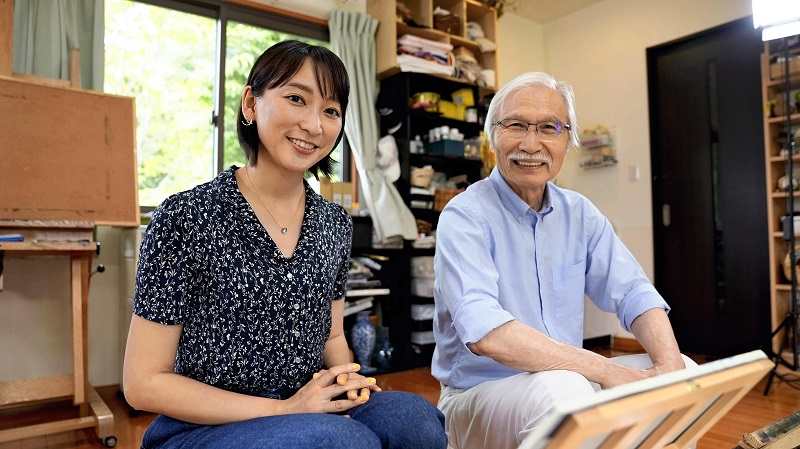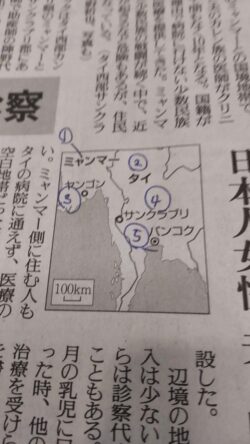Source of unpredictable surprises: 15 years of YouTube in Japan

12:15 JST, September 30, 2022
This year marks 15 years since YouTube launched their Japanese-language version. For some people, the online video platform has become part of daily life, and TV personalities and actors, as well as elderly people, have been drawing attention by posting videos on the platform.
YouTube was born in 2005. The Japanese version went live in 2007, and the number of viewers continued to grow. An advertising scheme was introduced in 2008, which allowed anyone to earn money by posting videos, and ‘YouTuber’ became an occupation.
In 2014, comedy duo Hakata Hanamaru Daikichi did a manzai comedy skit about the dream of becoming a YouTuber. Around this time, YouTubers had become widely recognized. YouTubers such as Hikakin were very popular. Today, YouTuber is ranked as one of the most admired professions among Japanese children and young adults.
Some Japanese stars became popular worldwide through the medium. In 2016, a video of Pikotaro singing “Pen-Pineapple-Apple-Pen (PPAP)” went viral on YouTube. PPAP had not yet attracted much attention in Japan until popular Canadian singer Justin Bieber posted the video to his social media, increasing the number of viewers. The spread of the video showed YouTube’s potential.
Pandemic boost
The demand for YouTube expanded even further amid the novel coronavirus pandemic, as people were urged to stay home to prevent infections. To encourage people at home, songs being performed individually by popular singers were combined into a single video and posted online.
“The First Take,” a channel that invites singers to perform a song and record it in just one take, and the live streaming of the Fuji Rock Festival also became popular during this time.
In the past, there was an invisible wall between the activities of YouTubers and TV personalities, including actors. This barrier has eroded in recent years as YouTubers have also appeared on TV.
In 2019, comedian Yuta Kajiwara — aka Kajisac — from duo King Kong launched a project in which he promised to quit as a comedian unless he gained one million subscribers to his YouTube channel.
Popular idol group Arashi launched a YouTube channel in the same year.
Present performances
In the past few years, a number of artists have posted music videos of their songs on YouTube even before their CDs were released. YouTube has truly become a well-established stage for artists to disseminate their works.
Currently, popular idol groups such as Snow Man post music videos of themselves dancing in casual attire, while actors such as Takeru Sato post videos that give viewers the impression they are having a peek into the stars’ personal lives.
As the popularity of YouTube grows, its content continues to diversify, expanding the YouTube culture. There is no doubt that unexpected trends will continue to appear in the future.
Harumichi Shibasaki and Anne on YouTube sensations
The following is an excerpt from an interview with watercolor painting instructor Harumichi Shibasaki and actor Anne. Shibasaki is popular for videos that show how to paint, while Anne posts videos of herself cooking, as well as singing while playing guitar.
The Yomiuri Shimbun: What made you start a YouTube channel?
Anne: I’ve been in the business of expressing myself in videos, but I’ve never made videos of my own. I always had a desire to share what I like with everyone. I was also encouraged to start because of the pandemic.
Shibasaki: I have held solo exhibitions in Tokyo’s Ginza district. Even though many people came to visit, my son said I should start [a channel] so that people from all over the world could see my works [through YouTube]. I wanted people to know how wonderful watercolor painting is.
Yomiuri: How’s the feedback?
Shibasaki: My first video went viral, and I felt the response was positive. I focused on visuals to explain the production process simply while thinking of people who aren’t good at drawing. But, I was surprised by comments saying they wanted to hear me talk more.
Anne: I was worried that the look into my personal life at home on YouTube might get in the way of my work as an actor. But once I started, I was happy to find that lots of people gave me good feedback each time I met them.
Yomiuri: What are the difficulties?
Shibasaki: The number of subscribers increased sharply after my videos received attention from overseas for reminding them of a popular American TV painting show [presented by Bob Ross]. The reasons for a video’s popularity are unpredictable.
Anne: There are some things I haven’t caught on to yet. I was happy, but surprised, when my first video showing me cooking became popular.
Yomiuri: What are your plans for the future?
Shibasaki: It’s difficult to hold a solo exhibition in New York. But on YouTube, my works get to be seen beyond borders and races. I am over 70 now, but I am happy to be connected this way. I want to develop art materials.
Anne: I was happy to talk with Mr. Shibasaki, whose YouTube channel I always watch. Raising children, I inevitably spend more time at home. I would like to share many things with viewers while cherishing my private life.
"Society" POPULAR ARTICLE
JN ACCESS RANKING







